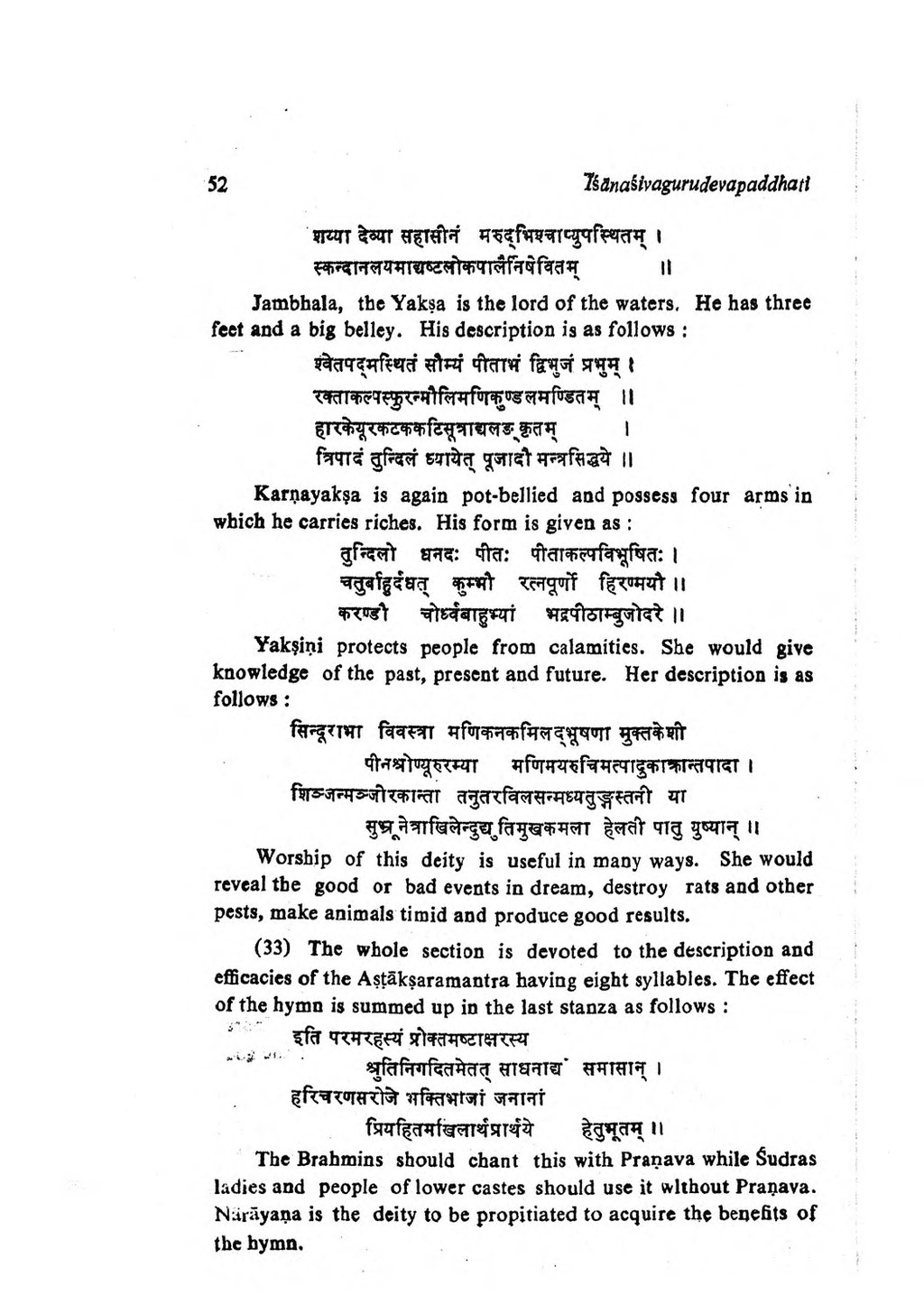________________
Išanaśivagurudevapaddhati शय्या देव्या सहासीनं मरुद्भिश्चाप्युपस्थितम् । स्कन्दानलयमाद्यष्टलोकपालैर्निषेवितम् ॥
Jambhala, the Yaksa is the lord of the waters. He has three feet and a big belley. His description is as follows :
श्वेतपद्मस्थितं सौम्यं पीताभं द्विभुज प्रभुम् ।
रक्ताकल्पस्फुरन्मौलिमणिकुण्डलमण्डितम् ॥
हारकेयूरकटककटिसूत्राद्यलङ्कृतम् । त्रिपादं तुन्दिलं ध्यायेत् पूजादौ मन्त्रसिद्धये ।।
Karņayakşa is again pot-bellied and possess four arms in which he carries riches. His form is given as :
तुन्दिलो धनदः पीतः पीताकल्पविभूषितः ।
चतुर्बाहुर्दधत् कुम्भौ रत्नपूर्णाो हिरण्मयो ।।
करण्डौ चोर्ध्वबाहुभ्यां भद्रपीठाम्बुजोदरे ॥
Yakşiņi protects people from calamities. She would give knowledge of the past, present and future. Her description is as follows:
सिन्दूराभा विवस्त्रा मणिकनकमिलद्भूषणा मुक्तकेशी पीनश्रोण्यरुरम्या मणिमयरुचिमत्पादुकाक्रान्तपादा।
शिञ्जन्मञ्जीरकान्ता तनुतरविलसन्मध्यतुङ्गस्तनी या
सुभ्रूनेत्राखिलेन्दुद्युतिमुखकमला हेलती पातु युष्यान् ।।
Worship of this deity is useful in many ways. She would reveal the good or bad events in dream, destroy rats and other pests, make animals timid and produce good results.
(33) The whole section is devoted to the description and efficacies of the Astāksara mantra having eight syllables. The effect of the hymn is summed up in the last stanza as follows:
३ इति परमरहस्यं प्रोक्तमष्टाक्षरस्य
श्रुतिनिगदितमेतत् साधनाद्य समासान् । हरिचरणसरोजे भक्तिभाजां जनानां प्रियहितखिलार्थप्रार्थये हेतुभूतम् ।। The Brahmins should chant this with Pranava while Sudras ladies and people of lower castes should use it without Pranava. Narāyana is the deity to be propitiated to acquire the benefits of the hymn.

